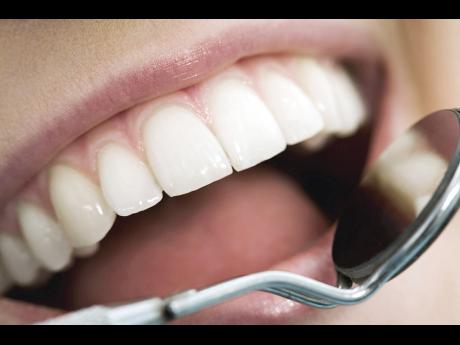Fake braces fashion takes over - But docs warn against the practice
Some Jamaicans are now flocking a new trend of sporting ‘fashion braces’, where ordinary dental braces are installed by non-professionals, at a significantly reduced cost, solely in the name of fashion.
However, dentists are alarmed by the practice and are warning persons against the dangerous fad, as it poses many serious health risks, including teeth loss.
Persons wishing to sport fashion braces fork out as much as $18,000 for single row regular metallic brackets, to $44,000 for both rows of ceramic brackets. This is significantly lower then the average cost of professional braces, which averages about $800,000.
The fad is fast taking root in Jamaica, as the fashion braces entity has more than 10,000 followers on its Instagram page, with many persons enquiring about how to engage its services. The entity claims they are mobile, and have offered services all over the island, including Manchester, Kingston, St James and St Ann.
locally based
When our news team posed as an interested customer and contacted a locally based entity offering the fashion braces, a representative admitted that the service is not administered by an orthodontist (braces specialist), but said they install the braces in a similar fashion. “When you come to us, we install the braces by placing them individually on each tooth, then placing the wires and the colours you desire. That’s it. You pay and you’re off,” the representative said.
According to the representative, the client feels discomfort for approximately two days after installation, and the process may be painful if the client has deformed teeth. The braces stay on for as long as the client wishes and can be used for minor corrections such as closing a tooth gap, the representative claimed.
This is worrisome news for Dr Gail Ann Allen, an orthodontist at the Kingston-based dental office, Island Smiles. She said braces installation is an extremely technical and extensive process, which should only be undertaken by professionals. “Before putting braces on, we have to do a complete examination and we have to take complete orthodontic records, which involves photographs and X-rays, then we use those records to diagnose the case, then we plan treatment accordingly,” Allen explained.
developing cavities
She noted that if these precise steps are not followed, the clients could lose their teeth, suffer infections and many other maladies. “There is the risk of someone developing cavities, developing issues that could lead to or worsen gum disease. There could be things like recessions where the bone and the gum tissue are eroded away from the teeth,” Allen warned. “Also, the nerve inside of the tooth could die if the force is being applied by somebody who doesn’t know anything about orthodontics. The person can wind up with an abscess, a localised swelling, or the infection could spread throughout the whole face.”
Echoing similar sentiments, president of the Jamaica Dental Association, Dr Heather Myers, said: “No one other than a specially trained orthodontist should be moving teeth”.
She added that if the teeth are moved into an unhealthy position, it could cause head and neck pain, pain in the jawbone joint, and even limited mobility of the jawbone.
“We are to take it upon ourselves to be our own health advocate. When you engage in these practices, you are putting yourself at risk,” Myers said.






































